Long-Term Durability of Bio-Polymer Modified Concrete in Tidal Flooding Prone Area: A Challenge of Sustainable Concrete Materials
Abstract
:1. Introduction
2. Materials and Methods
- On-site column retrofitting and control column construction
- Non-destructive test for retrofitted and control columns
- Destructive test for retrofitted and control columns
3. Results
3.1. On-Site Column Retrofitting and Construction
3.2. Non-Destructive Test for Retrofitted and Control Columns
3.3. Destructive Test for Column Specimens
4. Discussion
5. Conclusions
Author Contributions
Funding
Institutional Review Board Statement
Informed Consent Statement
Data Availability Statement
Acknowledgments
Conflicts of Interest
References
- Dimri, A.; Varshney, J.K.; Verma, V.K.; Gupta, S. A Review on Strength of Concrete in Seawater. Int. J. Eng. Res. 2015, 4, 844–847. [Google Scholar] [CrossRef]
- Chandrasekaran, S.; Jain, A. Materials for Ocean Structures, 1st ed.; CRC Press, Taylor & Francis Group: London, UK, 2016; pp. 129–131. [Google Scholar] [CrossRef]
- Fukute, T.; Hamada, H. A Study on the Durability of Concrete Exposed in Marine Environment for 20 Years. Doboku Gakkai Ronbunshu 1992, 442, 43–52. [Google Scholar] [CrossRef] [Green Version]
- Irmawaty, R.; Hamada, H.; Witanto, H. Durability Design for Indonesian Climate. In Proceedings of the 2nd International Seminar on Infrastructure Development in Cluster Island Eastern Part of Indonesia (ISID 2014), Balikpapan, Indonesia, 3–4 June 2014. [Google Scholar]
- Nanukuttan, S.V.; Basheer, P.A.M.; McCarter, W.J.; Tang, L.; Holmes, N.; Chrisp, T.M.; Starrs, G.; Magee, B. The performance of concrete exposed to marine environments: Predictive modelling and use of laboratory/on site test methods. Constr. Build. Mater. 2015, 93, 831–840. [Google Scholar] [CrossRef] [Green Version]
- Khanzadeh-Moradllo, M.; Meshkini, M.H.; Eslamdoost, E.; Sadati, S.; Shekarchi, M. Effect of Wet Curing Duration on Long-Term Performance of Concrete in Tidal Zone of Marine Environment. Int. J. Concr. Struct. Mater. 2015, 9, 487–498. [Google Scholar] [CrossRef] [Green Version]
- Younis, A.; Ebead, U.; Suraneni, P.; Nanni, A. Fresh and hardened properties of seawater-mixed concrete. Constr. Build. Mater. 2018, 190, 276–286. [Google Scholar] [CrossRef]
- Susilorini, M.R. The Performance of Early-Age Concrete with Seawater Curing. J. Coast. Dev. 2013, 8, 89–95. [Google Scholar]
- Guo, Q.; Chen, L.; Zhao, H.; Admilson, J.; Zhang, W. The Effect of Mixing and Curing Sea Water on Concrete Strength at Different Ages. MATEC Web Conf. 2018, 142, 02004. [Google Scholar] [CrossRef]
- ACI Committee 548 Report on Polymer-Modified Concrete. American Concrete Institute. 2009. Available online: https://www.concrete.org/Portals/0/Files/PDF/Previews/548309web.pdf (accessed on 10 December 2021).
- Bothra, S.R.; Ghugal, Y.M. Polymer-Modified Concrete: Review. Int. J. Res. Eng. Technol. 2015, 4, 845–848. [Google Scholar] [CrossRef]
- Hirde, S.K.; Dudhal, O.S. Review on Polymer Modified Concrete And Its Application To Concrete Structures. Int. J. Eng. Res. 2016, 5, 766–769. [Google Scholar]
- Alhazmi, H.; Shah, S.A.R.; Anwar, M.K.; Raza, A.; Ullah, M.K.; Iqbal, F. Utilization of Polymer Concrete Composites for a Circular Economy: A Comparative Review for Assessment of Recycling and Waste Utilization. Polymers 2021, 13, 2135. [Google Scholar] [CrossRef] [PubMed]
- Zhao, C.; Jia, X.; Yi, Z.; Li, H.; Peng, Y. Mechanical performance of single-graded copolymer-modified pervious concrete in a corrosive environment. Materials 2021, 14, 7304. [Google Scholar] [CrossRef] [PubMed]
- Madhani, B.; Palson, P. Comparative Study of Corrosion Resistance of Polymer Modified Concrete and Concrete with Corrosion Inhibiting Agent. International journal of engineering research and technology, 5.Comparative Study of Corrosion Resistance of Polymer Modified Concrete and Concrete with Corrosion Inhibiting Agent. Int. J. Eng. Res. 2016, 5, 314–319. [Google Scholar] [CrossRef]
- Seyed Farhad Nabavi, B. Performance of Polymer-Concrete Composites in Service Life of Maritime Structures. Ph.D. Thesis, University of Technology, Sydney, Australia, December 2014. [Google Scholar]
- Binti Noruzman, A.H. Performance of Polymer Modified Concrete Incorporating Polyvinyl Acetate Waste. Ph.D. Thesis, Universiti Teknologi Malaysia, Johor, Malaysia, August 2019. [Google Scholar]
- Wang, K.; Liu, Z.; Wang, Z.; Yang, W. Study on polymer modified cement-based coating with healing effect on rusty carbon steel. Int. J. Corros. 2014, 2014, 628191. [Google Scholar] [CrossRef] [Green Version]
- Kantharia, M.; Mishra, P.K.; Trivedi, M.K.; Gogoi, R. Effect of chemical exposure on mechanical strength of polymer mortar. Int. J. Recent Technol. Eng. 2019, 7, 944–948. [Google Scholar]
- Retno Susilorini, M.I.; William, S.S.; Rianto; Kartikowati, S.; Setiawan, M.H.; Ludfie Hardian, P.; Kurniawan, E. Masonry Walls Retrofitting with Eco-Concrete Bricks in Tidal Flooding Prone Area. Int. J. Eng. Res. Technol. 2020, 13, 560–569. [Google Scholar] [CrossRef]
- Susilorini, R.M.I.R.; Rejeki, V.G.S.; Santosa, B.; Caresta, F.D.; Putro, M.S. Polymer modified mortar with bonding adhesive agent for column repairing in tidal flooding prone area. AIP Conf. Proc. 2018, 1977, 030049. [Google Scholar] [CrossRef]
- Retno Susilorini, M.I.; Suryanto, R.; Pramana, Y. Carbohydrate polymers for green multi-purpose mortar. Int. J. Eng. Res. Technol. 2020, 13, 580–585. [Google Scholar] [CrossRef]
- Susilorini, R.M.I.R.; Suwarno, D.; Santosa, B.; Putra, L.H.; Kurniawan, E. Rebound Hammer Test result of old repaired masonry wall using premixed mortar additive in tidal flooding prone area. AIP Conf. Proc. 2018, 1977, 040012. [Google Scholar] [CrossRef]
- Susilorini, R.M.I.R.; Santosa, B.; Rejeki, V.G.S.; Riangsari, M.F.D.; Hananta, Y.D. The increase of compressive strength of natural polymer modified concrete with Moringa oleifera. AIP Conf. Proc. 2017, 1818, 020059. [Google Scholar] [CrossRef] [Green Version]
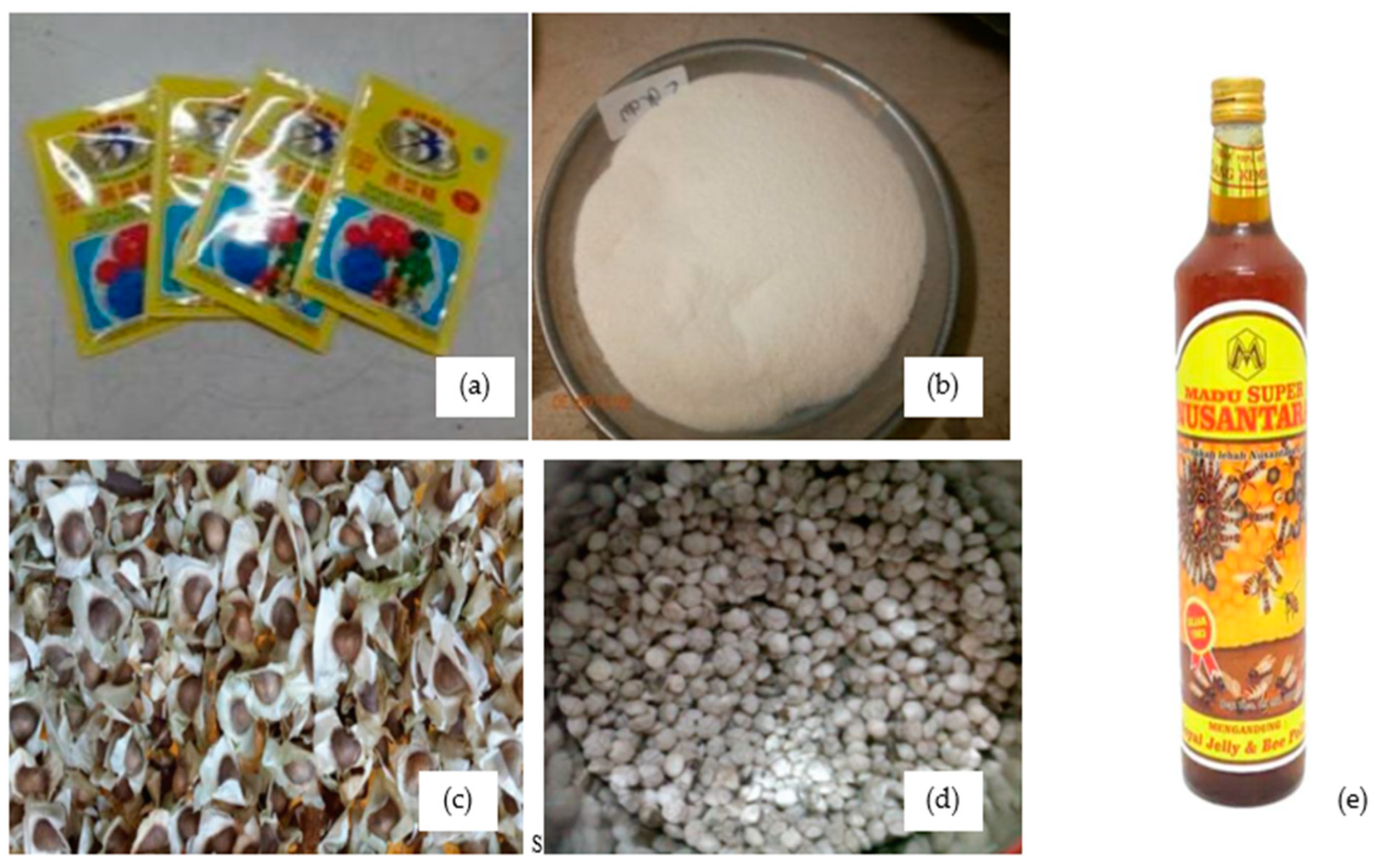

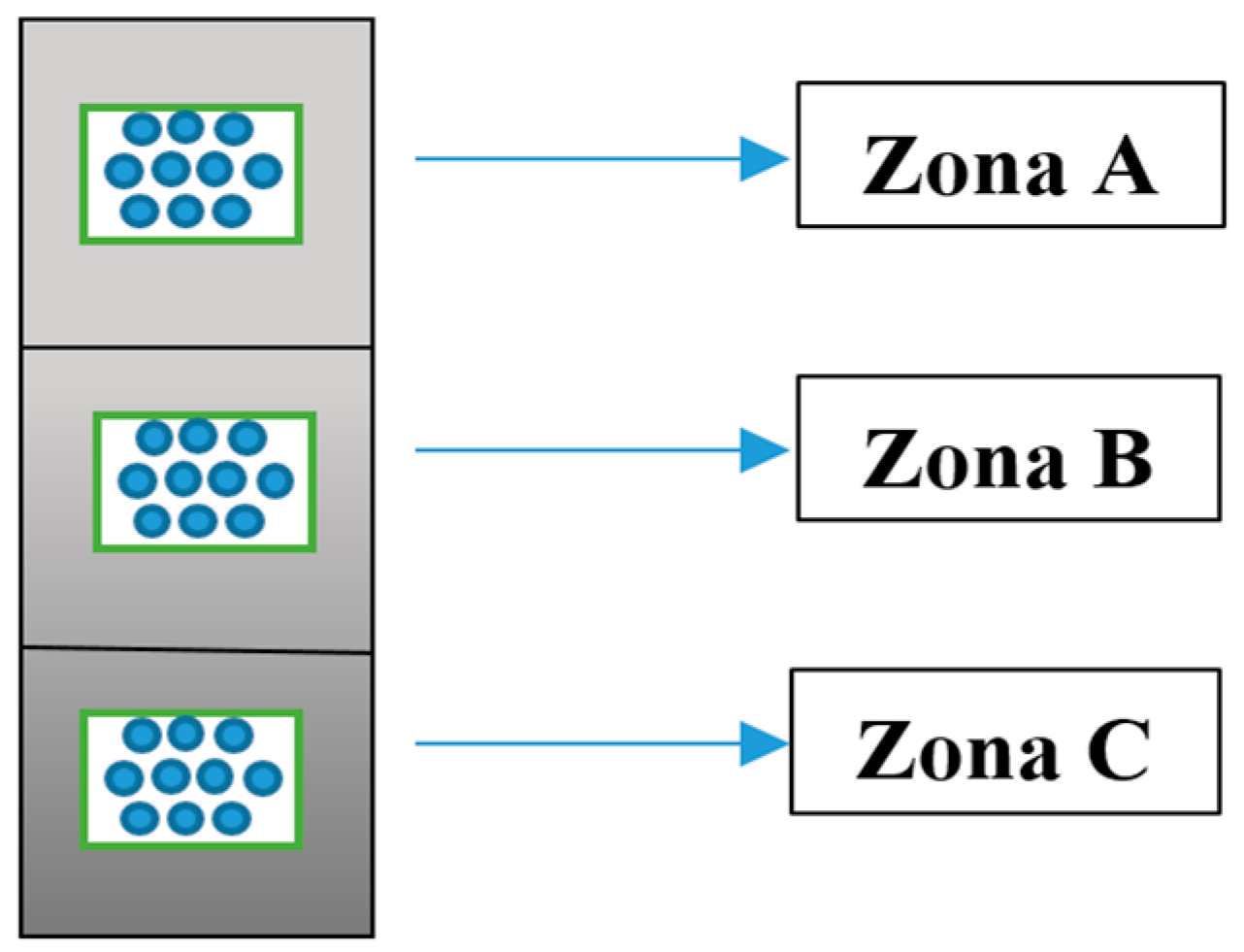
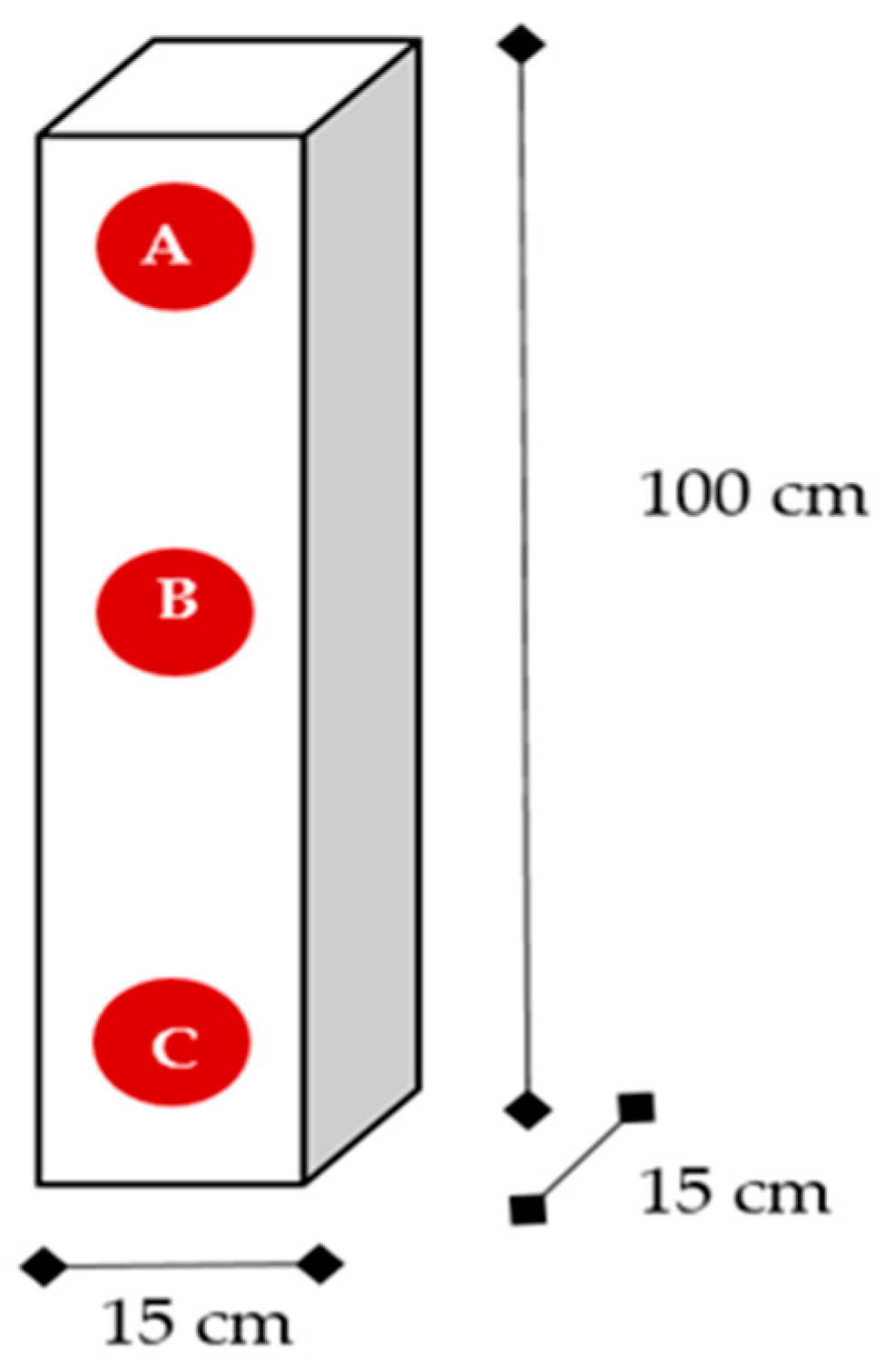


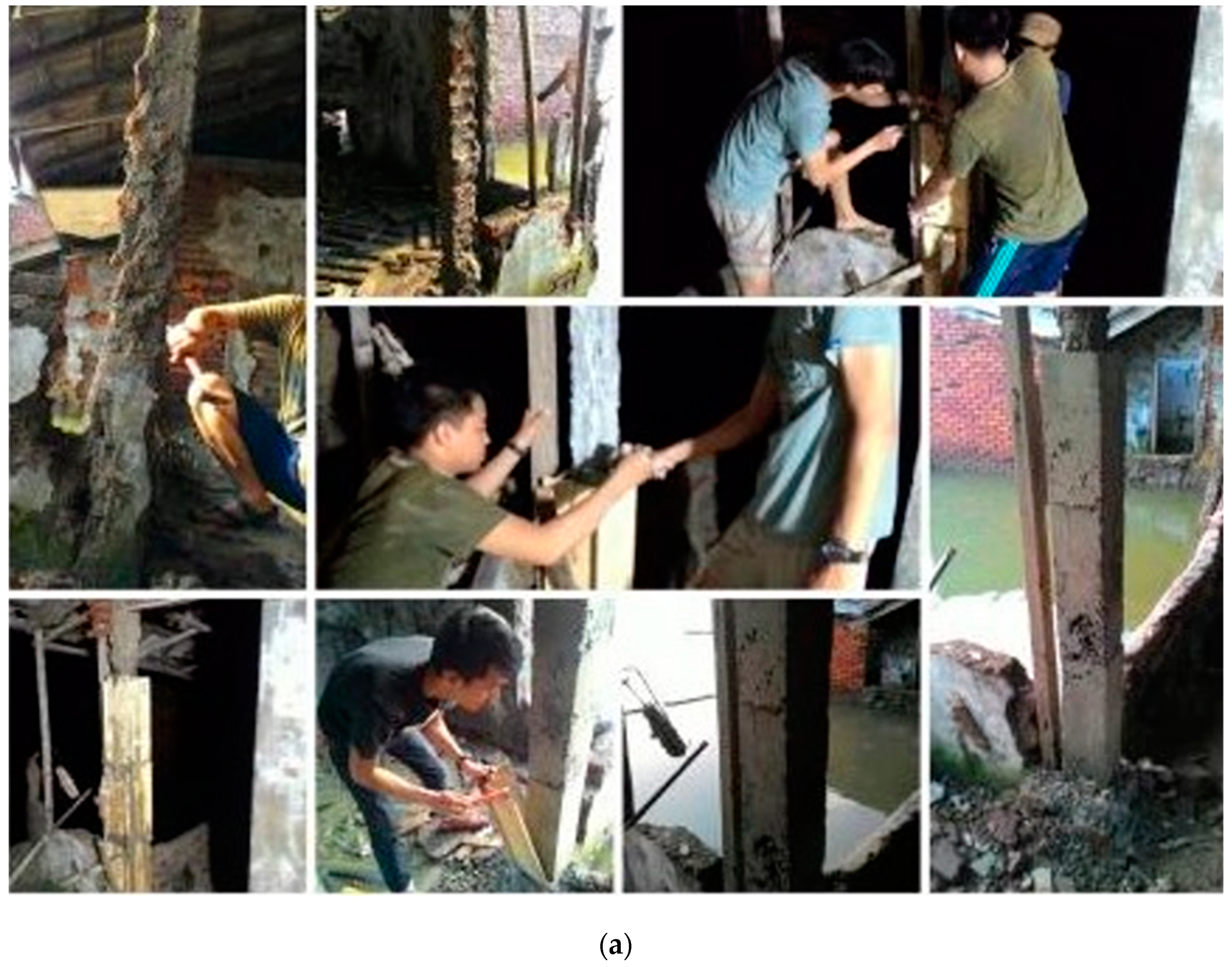
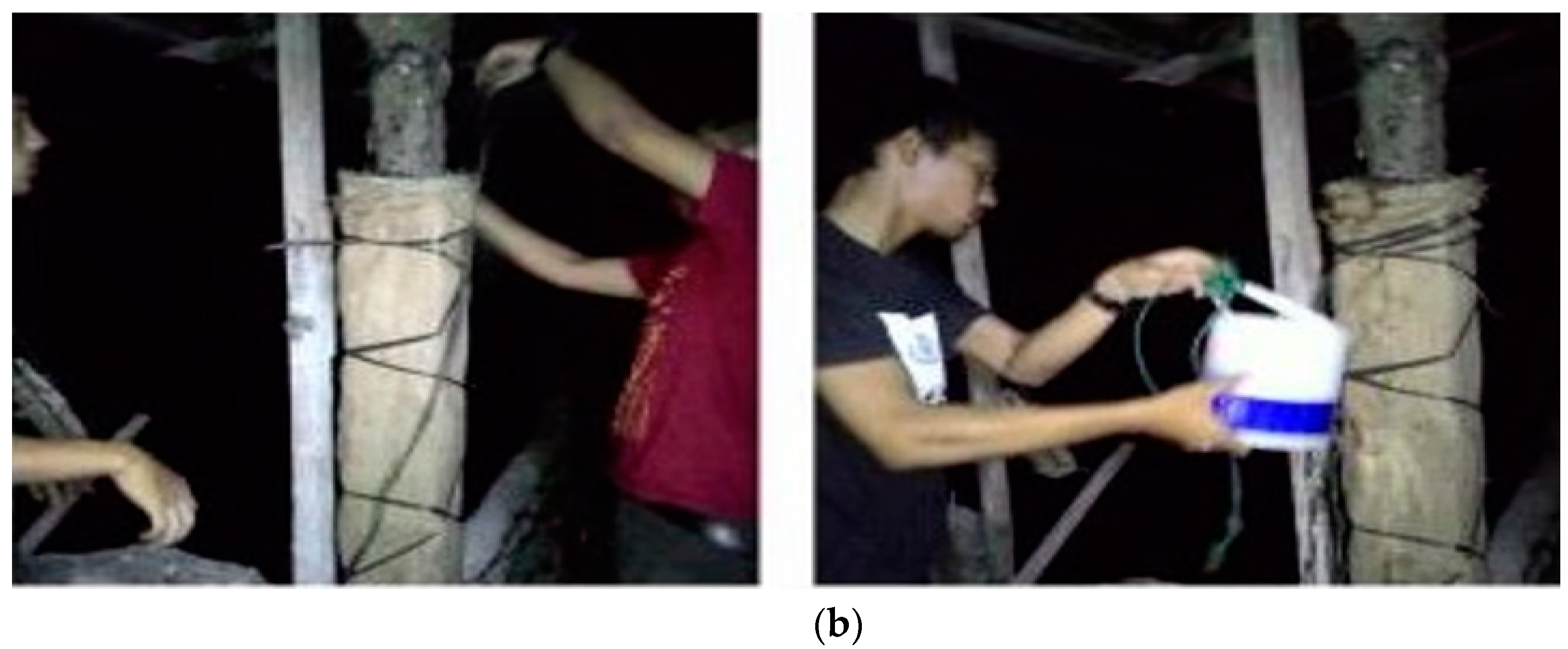

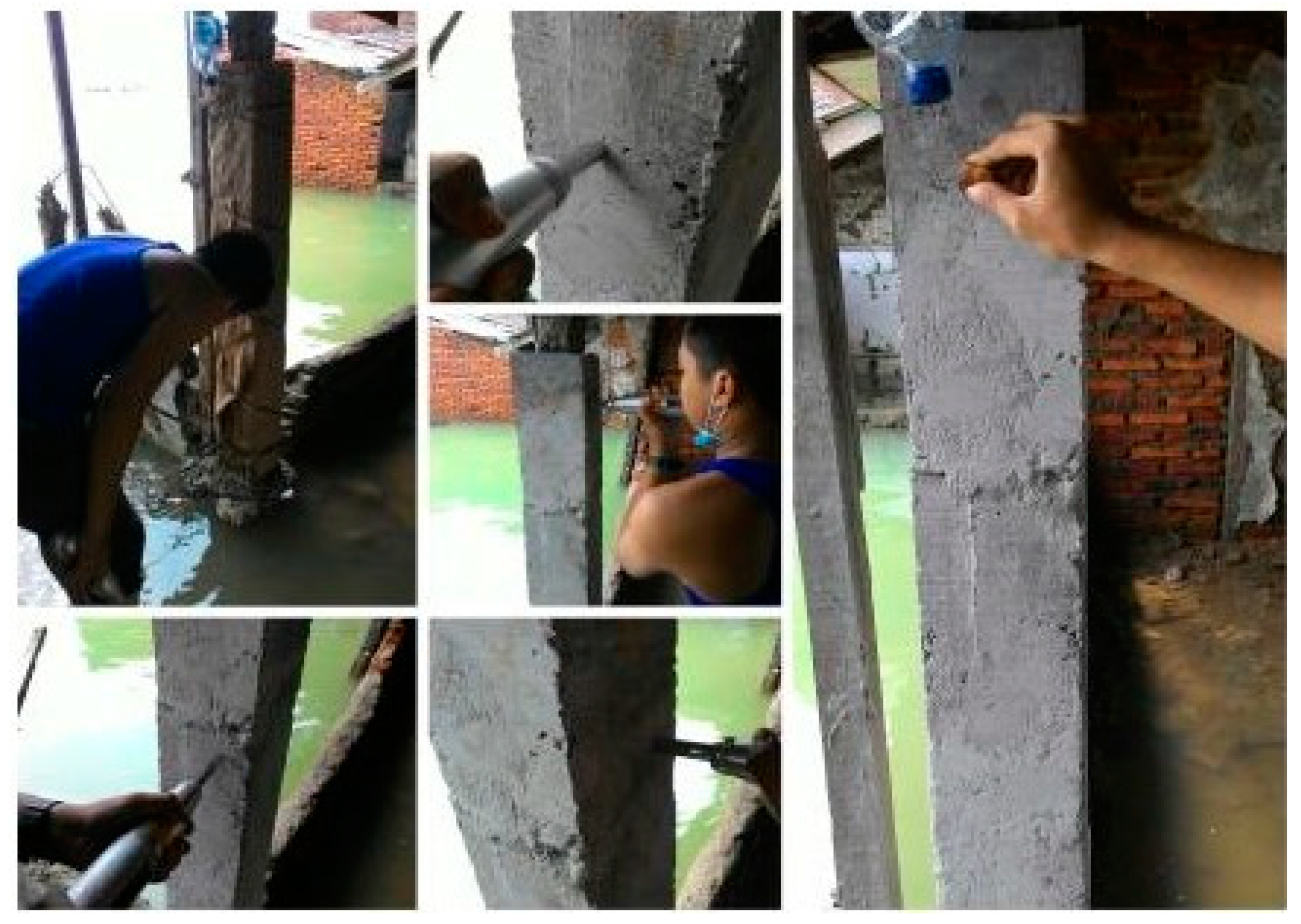
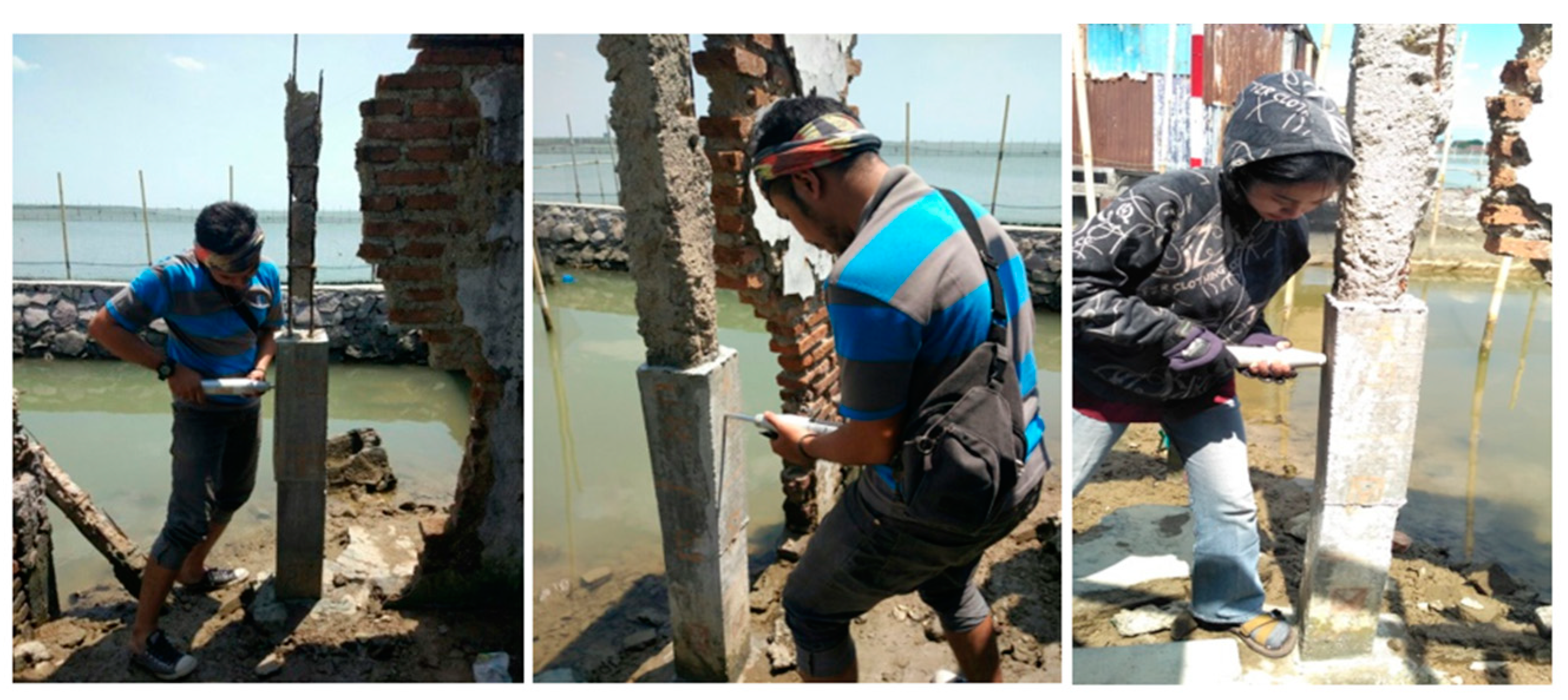

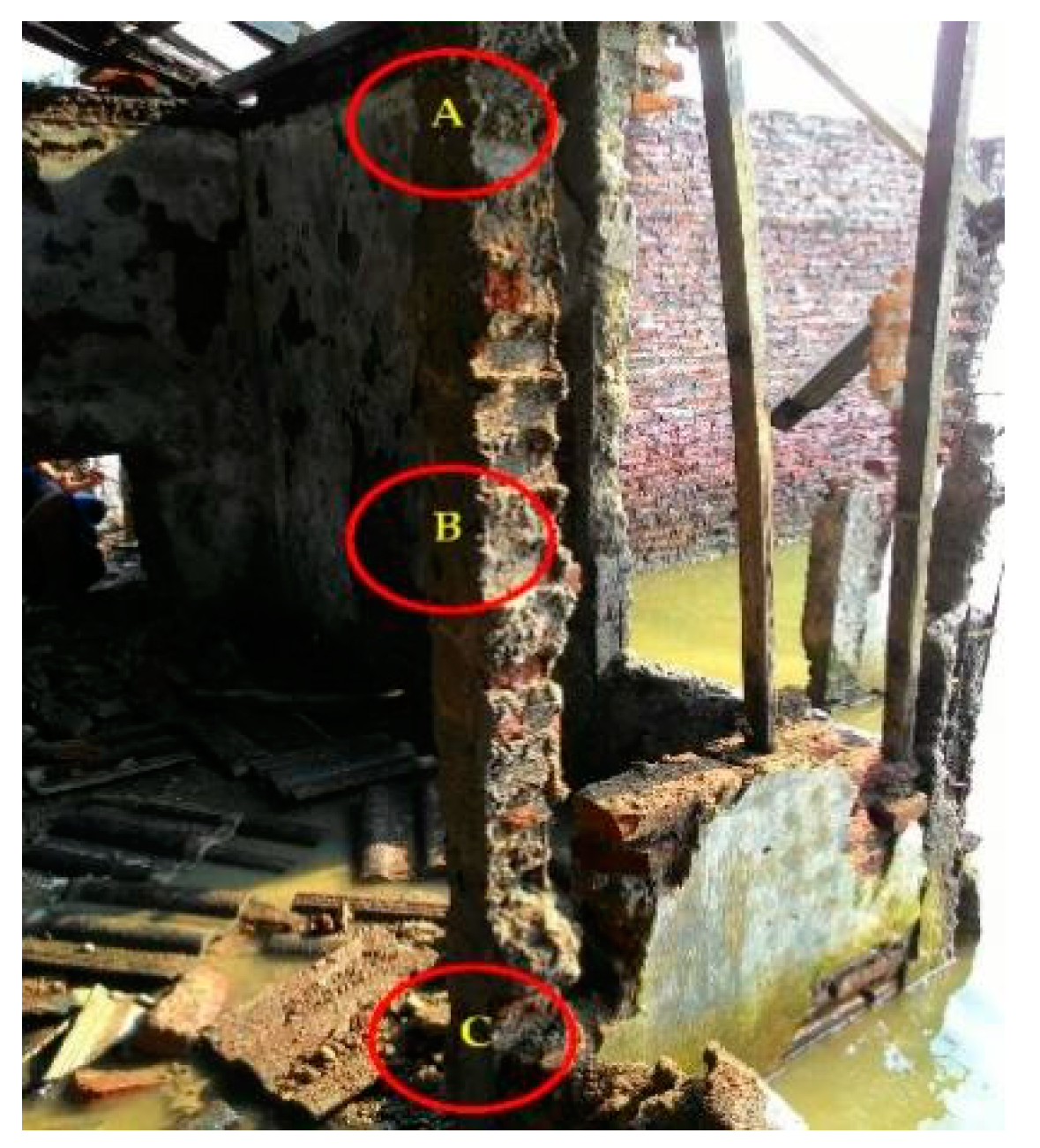
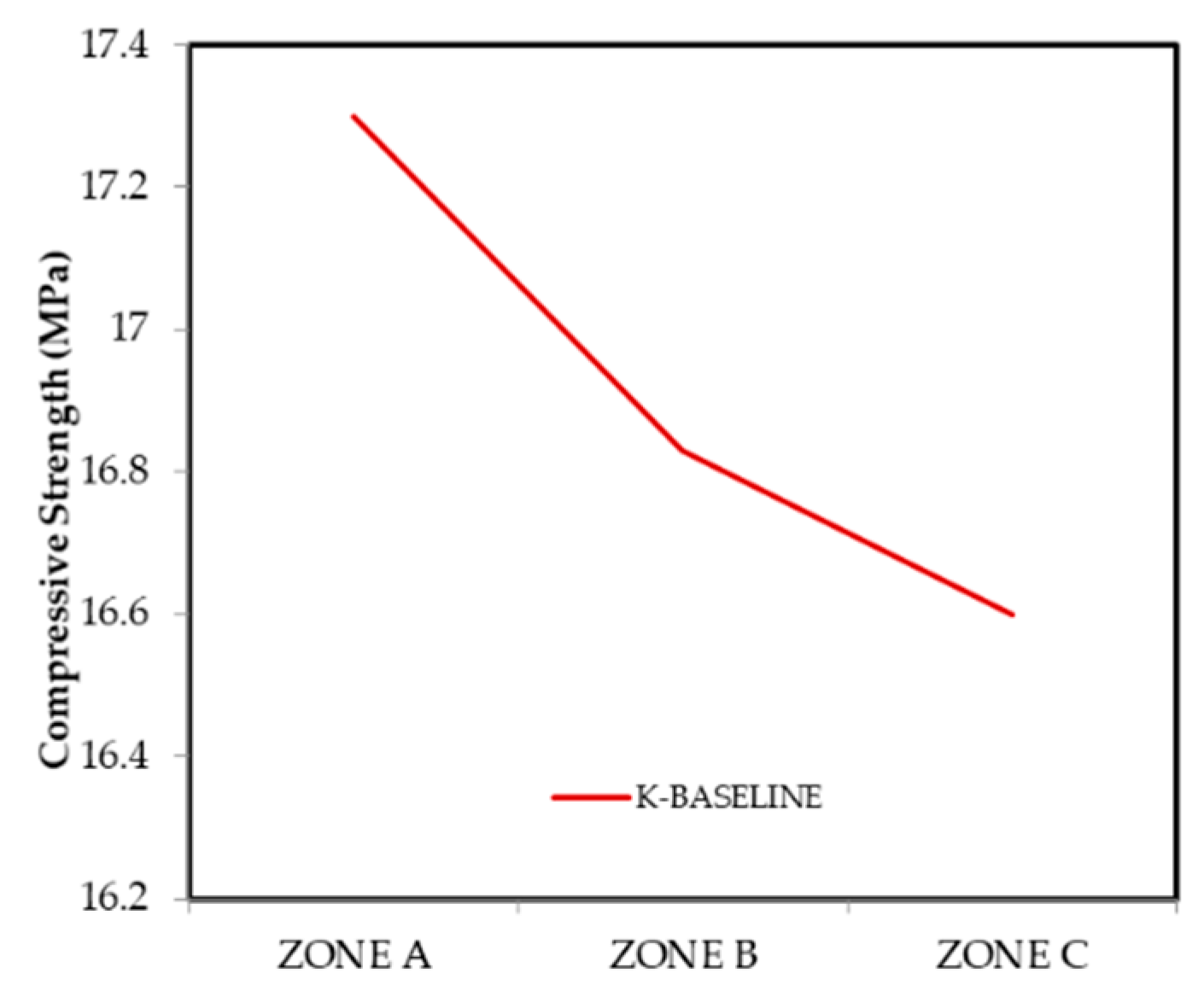

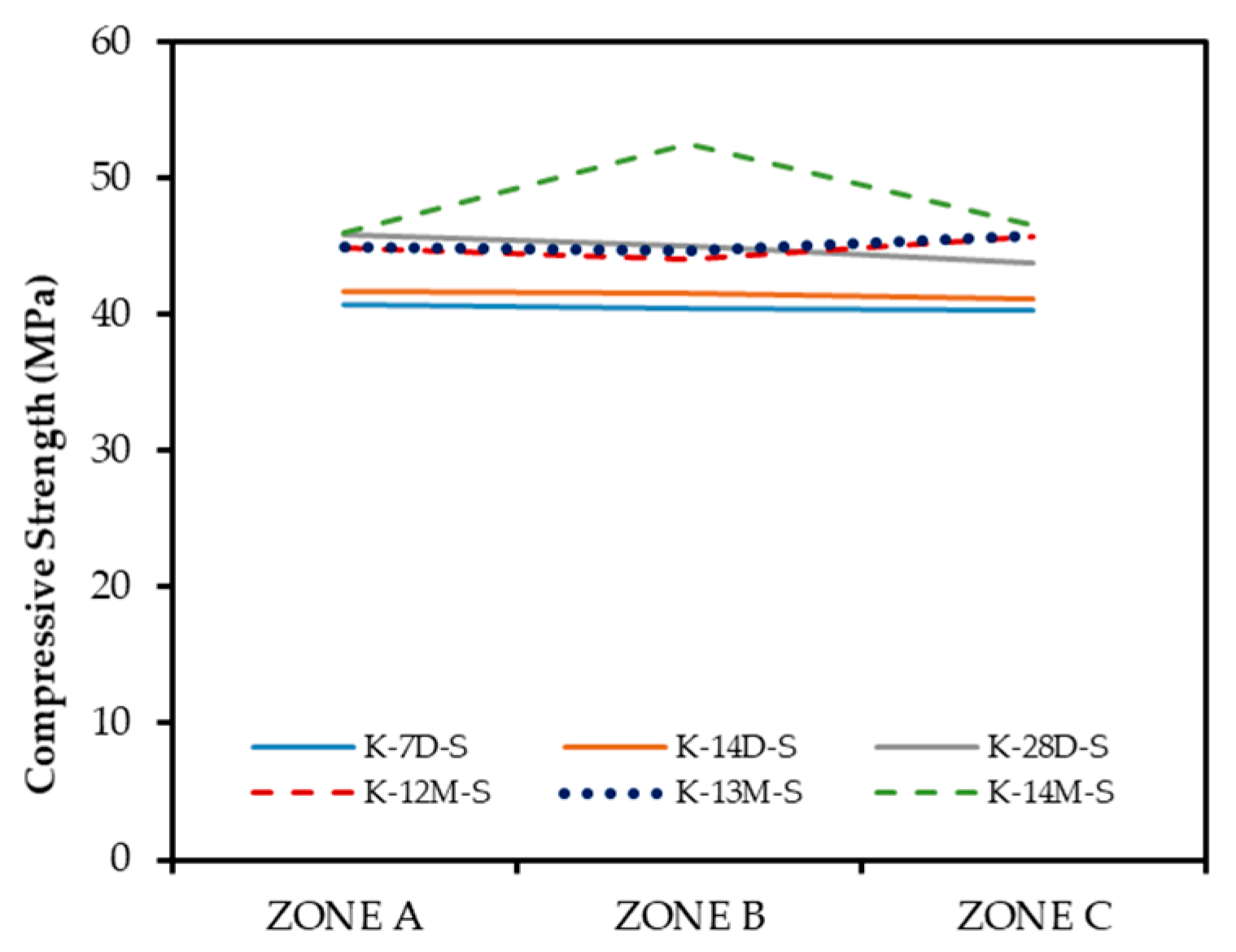
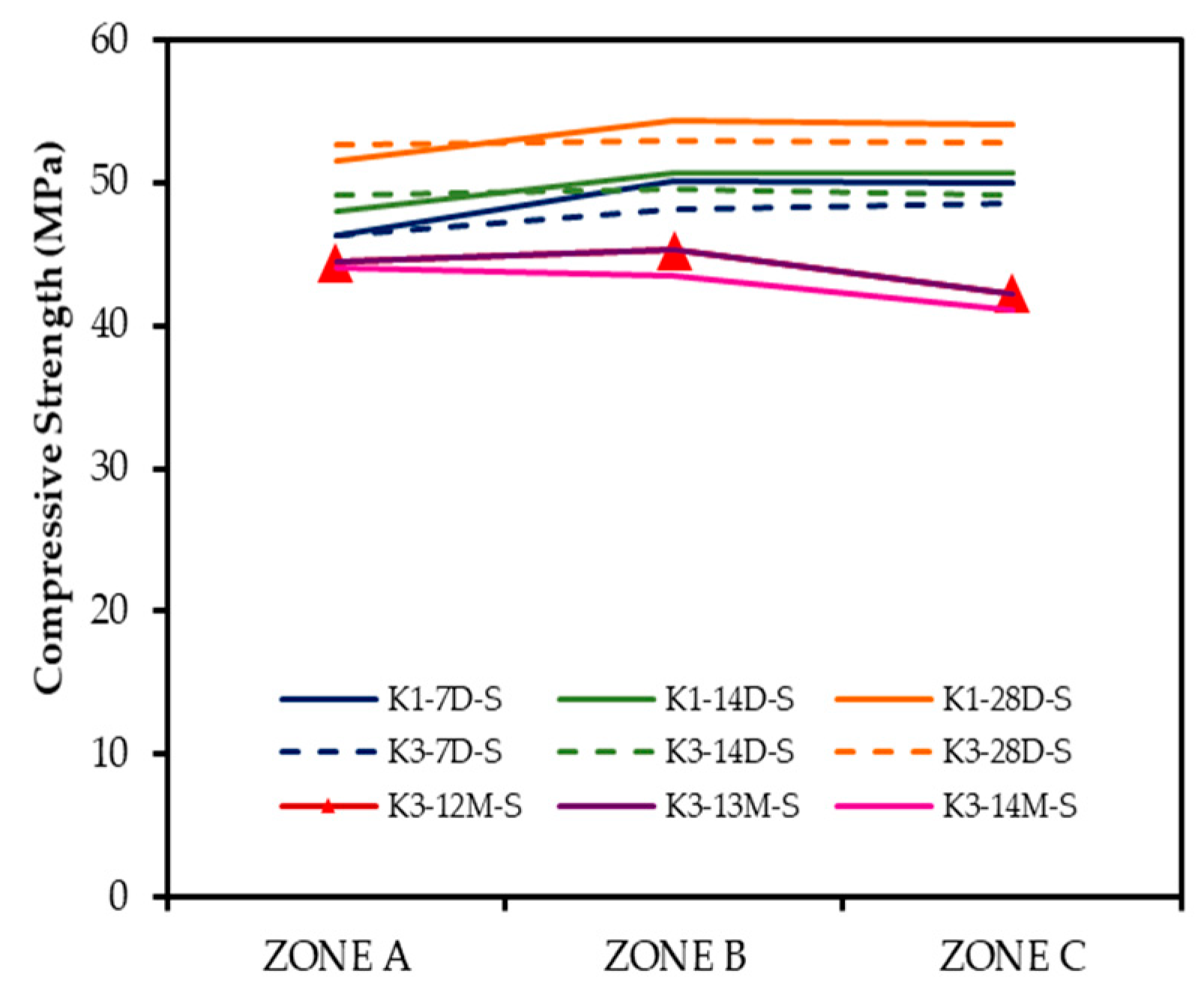

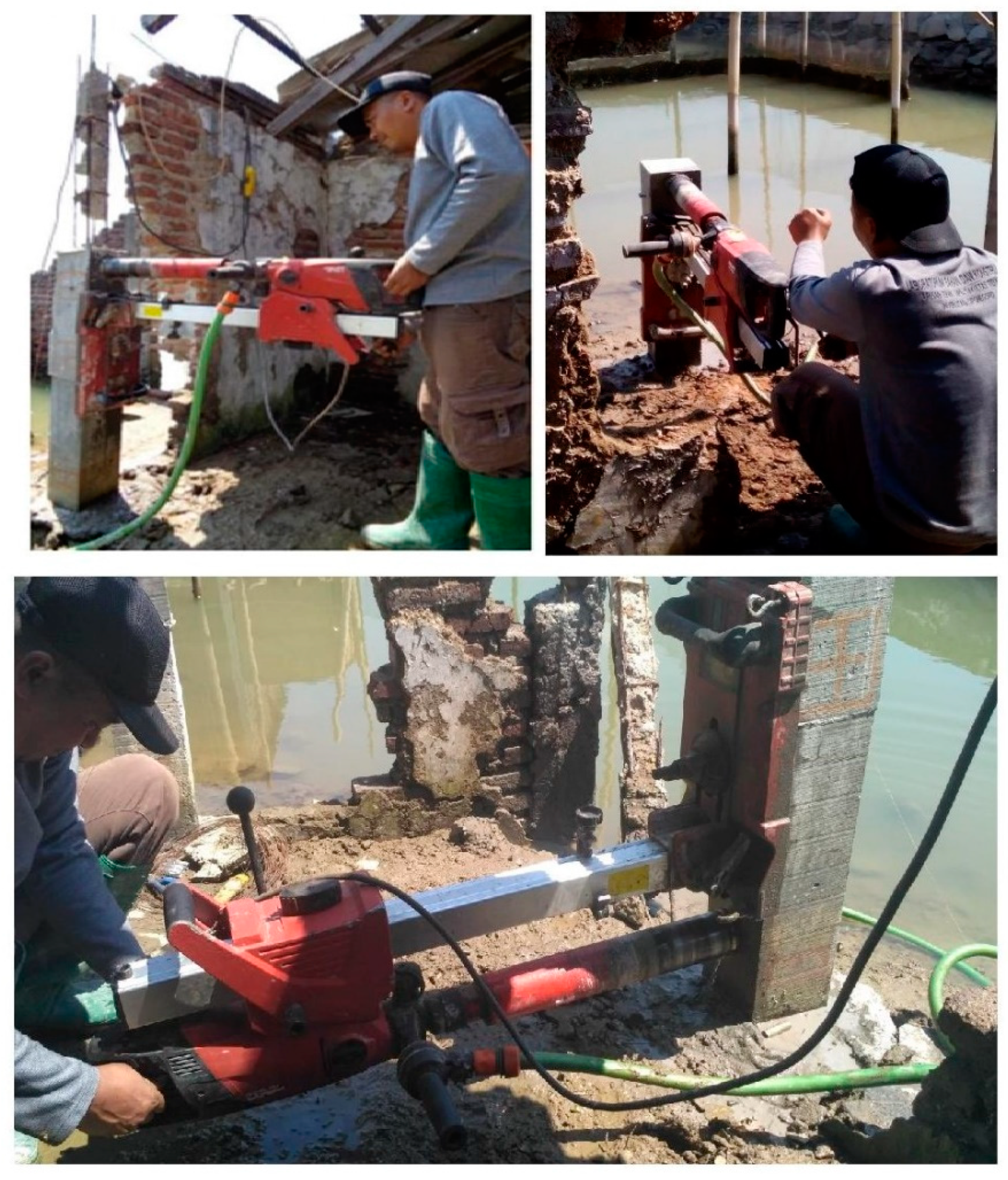
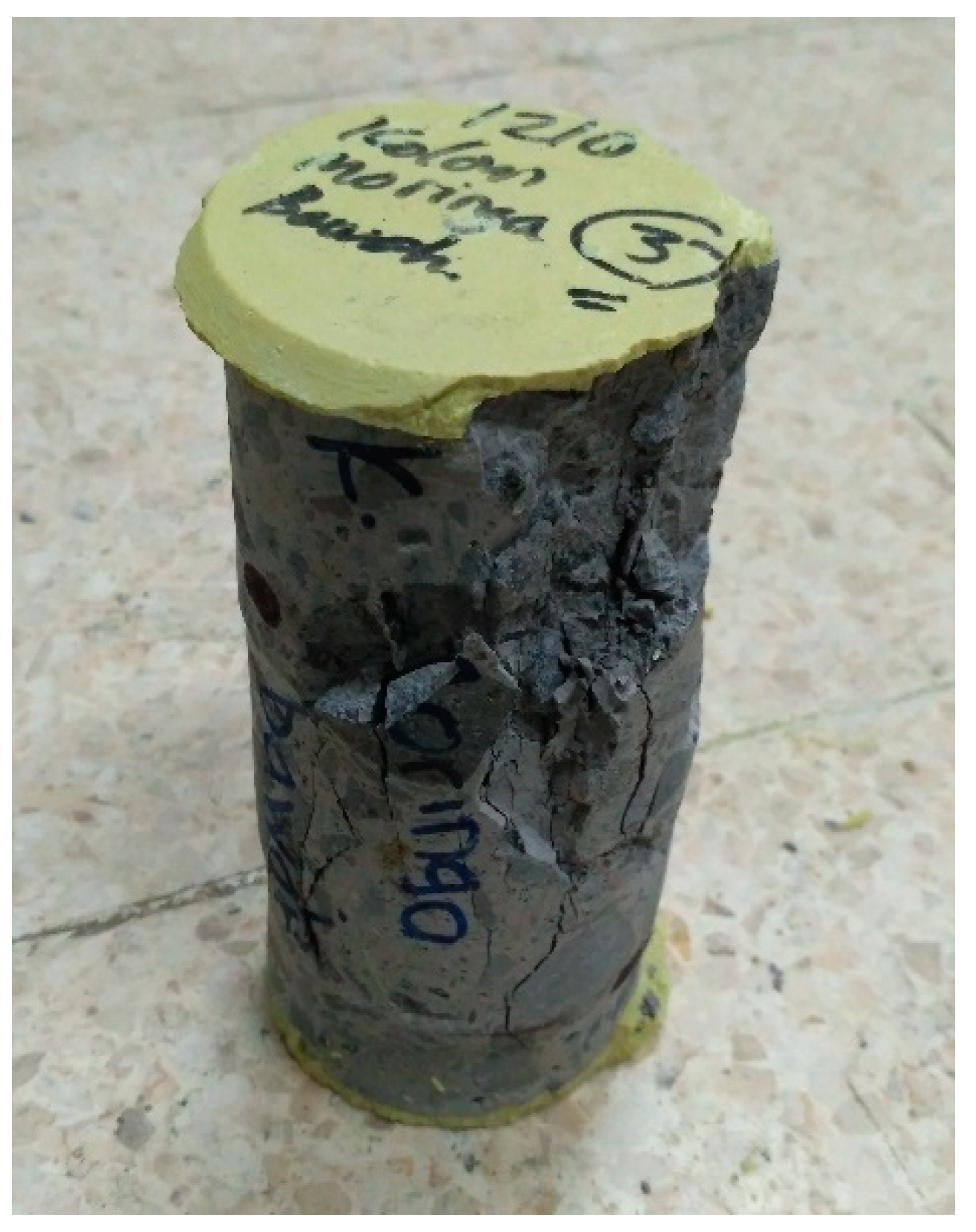
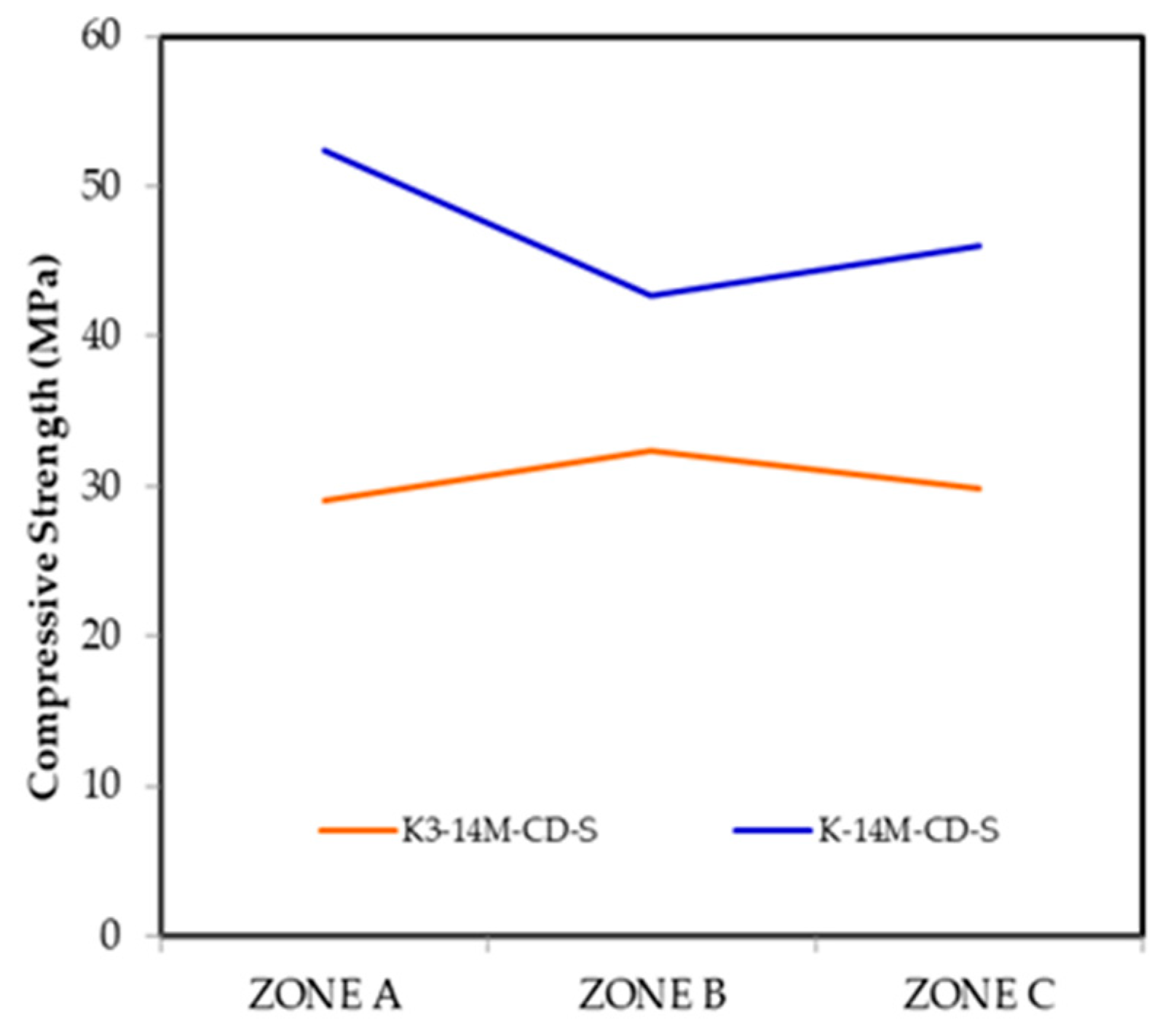
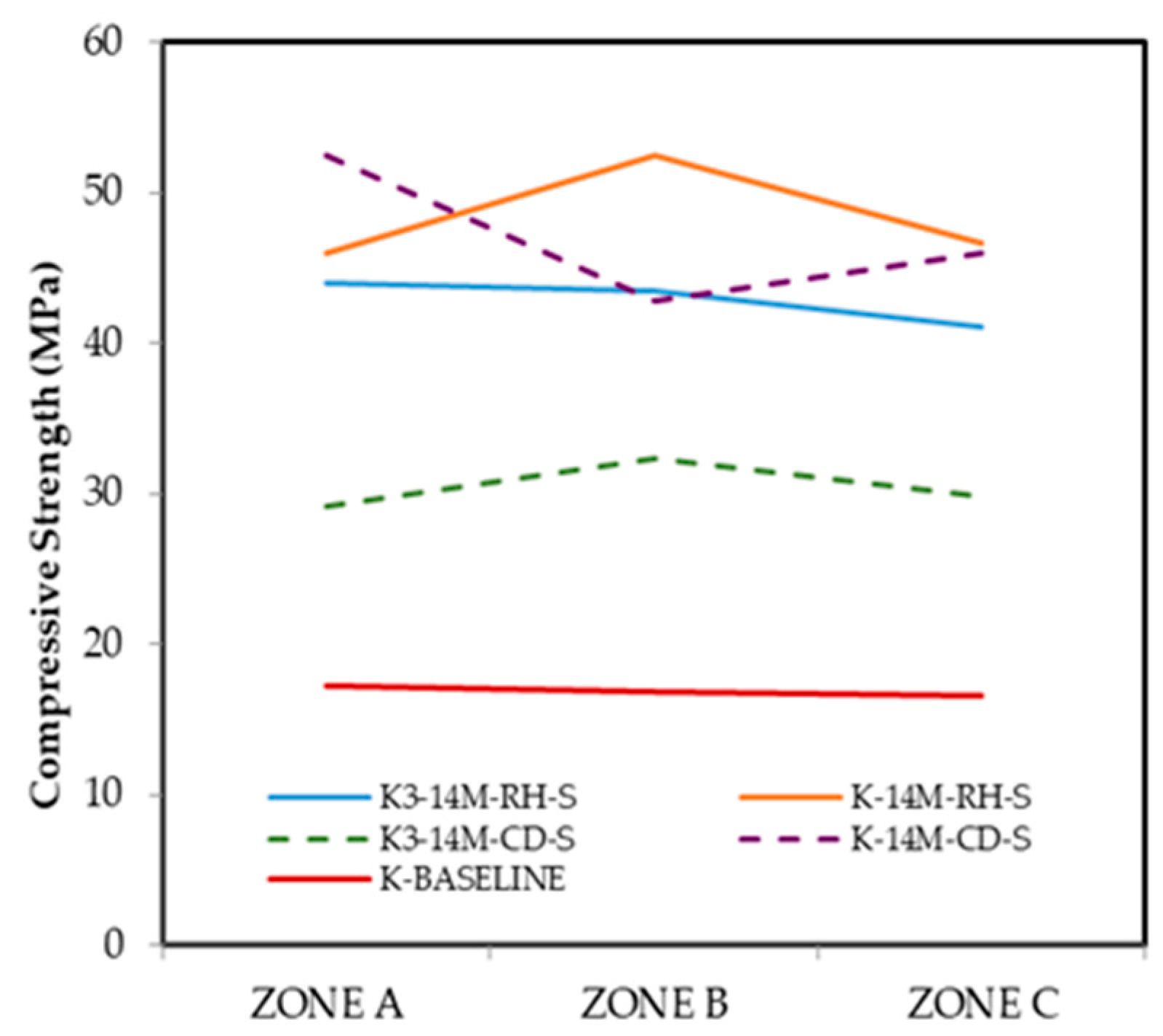
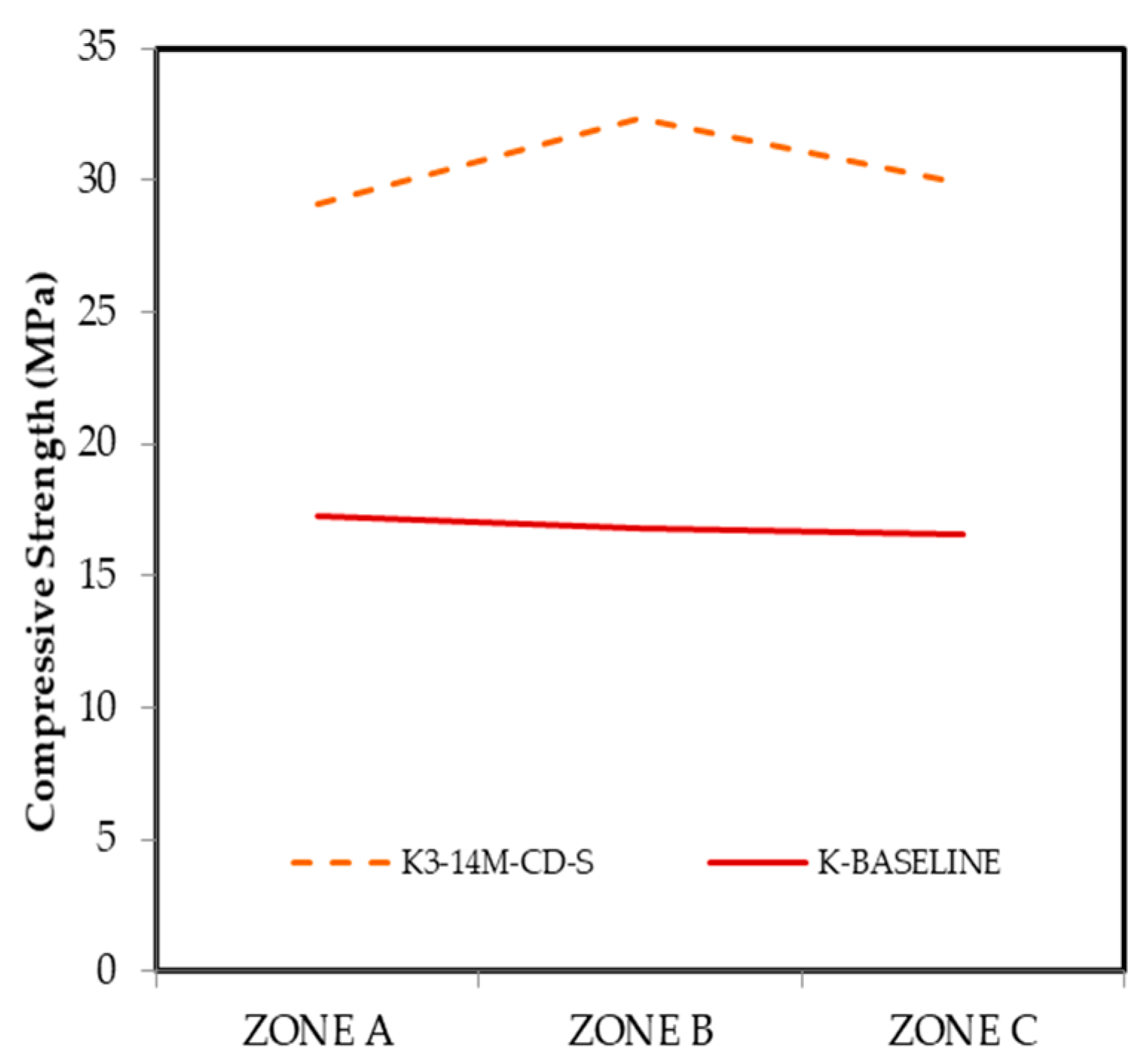
| No | Specimen Code | Status | Mix Composition |
|---|---|---|---|
| 1 | K1 * | retrofitted column | Mix I * |
| 2 | K3 * | retrofitted column | Mix III * |
| 3 | K | control column | Mix-Normal |
| Mix Composition | Specimen Code | Gracilaria sp. | Honey | Moringa Oleifera |
|---|---|---|---|---|
| % of Cement Weight | ||||
| Mix I * | K1 * | 0.05 | 0.03 | 0 |
| Mix III * | K3 * | 0.025 | 0 | 0.075 |
| Mix-Normal | K | --- | --- | --- |
| Cement | Sand | Crushed Stone | Water | Bio-Polymer |
|---|---|---|---|---|
| (kg) | (kg) | (kg) | (l) | (% of Cement Weight) |
| 8 | 8 | 8 | 3.6 | see Table 1 |
| Rebound Value Rα | Correction for Inclination Angle α | |||
|---|---|---|---|---|
| Upwards | Downwards | |||
| +90° | +45° | −45° | −90° | |
| 10 | 2.4 | 3.2 | ||
| 20 | −5.4 | −3.5 | 2.5 | 3.4 |
| 30 | −4.7 | −3.1 | 2.3 | 3.1 |
| 40 | −3.9 | −2.6 | 2 | 2.7 |
| 50 | −3.1 | −2.1 | 1.6 | 2.2 |
| 60 | −2.3 | −1.6 | 1.3 | 1.7 |
| R | Age of Concrete | |||
|---|---|---|---|---|
| 14 to 56 Days | 7 Days | |||
| Wm | Wmin | Wm | Wmin | |
| 20 | 101 | 54 | 121 | 74 |
| 21 | 113 | 64 | 132 | 83 |
| 22 | 126 | 75 | 145 | 94 |
| 23 | 139 | 86 | 157 | 104 |
| 24 | 152 | 98 | 169 | 115 |
| 25 | 166 | 110 | 183 | 127 |
| 26 | 180 | 122 | 196 | 138 |
| 27 | 195 | 135 | 210 | 150 |
| 28 | 210 | 149 | 225 | 164 |
| 29 | 225 | 163 | 239 | 177 |
| 30 | 241 | 178 | 254 | 191 |
| 31 | 257 | 193 | 269 | 205 |
| 32 | 274 | 209 | 285 | 220 |
| 33 | 291 | 225 | 300 | 234 |
| 34 | 307 | 240 | 315 | 248 |
| 35 | 324 | 256 | 331 | 263 |
| 36 | 342 | 273 | 348 | 279 |
| 37 | 360 | 290 | 365 | 295 |
| 38 | 370 | 307 | 381 | 311 |
| 39 | 395 | 324 | 398 | 327 |
| 40 | 413 | 341 | 416 | 344 |
| 41 | 432 | 359 | 434 | 361 |
| 42 | 450 | 377 | 451 | 378 |
| 43 | 469 | 395 | 470 | 396 |
| 44 | 488 | 414 | 488 | 414 |
| 45 | 507 | 432 | 507 | 432 |
| 46 | 526 | 450 | 526 | 451 |
| 47 | 546 | 470 | 546 | 570 |
| 48 | 565 | 489 | 565 | 489 |
| 49 | 584 | 508 | 584 | 508 |
| 50 | 604 | 527 | 604 | 527 |
| 51 | 623 | 546 | 623 | 546 |
| 52 | 643 | 565 | 643 | 565 |
| 53 | 663 | 584 | 663 | 584 |
| 54 | 683 | 603 | 683 | 603 |
| 55 | 703 | 622 | 703 | 622 |
Publisher’s Note: MDPI stays neutral with regard to jurisdictional claims in published maps and institutional affiliations. |
© 2022 by the authors. Licensee MDPI, Basel, Switzerland. This article is an open access article distributed under the terms and conditions of the Creative Commons Attribution (CC BY) license (https://creativecommons.org/licenses/by/4.0/).
Share and Cite
Susilorini, R.M.I.R.; Iskandar, I.; Santosa, B. Long-Term Durability of Bio-Polymer Modified Concrete in Tidal Flooding Prone Area: A Challenge of Sustainable Concrete Materials. Sustainability 2022, 14, 1565. https://doi.org/10.3390/su14031565
Susilorini RMIR, Iskandar I, Santosa B. Long-Term Durability of Bio-Polymer Modified Concrete in Tidal Flooding Prone Area: A Challenge of Sustainable Concrete Materials. Sustainability. 2022; 14(3):1565. https://doi.org/10.3390/su14031565
Chicago/Turabian StyleSusilorini, Rr. M. I. Retno, Iskhaq Iskandar, and Budi Santosa. 2022. "Long-Term Durability of Bio-Polymer Modified Concrete in Tidal Flooding Prone Area: A Challenge of Sustainable Concrete Materials" Sustainability 14, no. 3: 1565. https://doi.org/10.3390/su14031565








